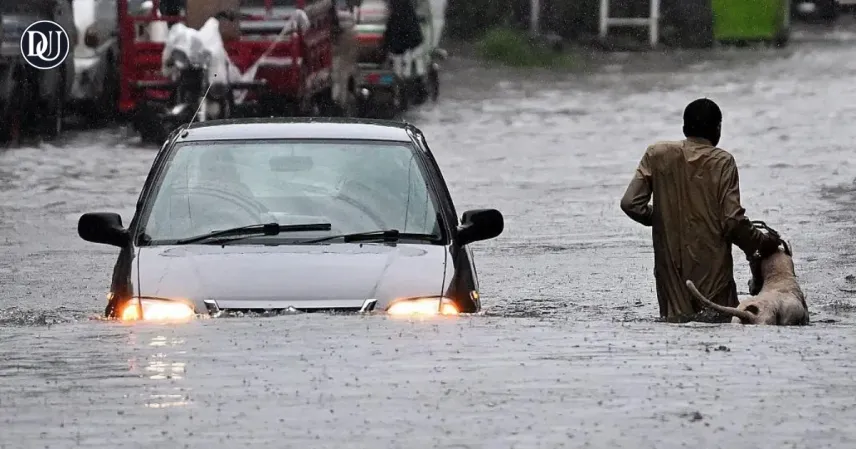Sixty-three people dead in Pakistan in just 24 hours because of monsoon rains. That number honestly just keeps circling in my head tonight, you know? It’s massive, especially when you consider it’s just the immediate toll from what felt like a blink of an eye. The BBC reported it, saying something like 63 deaths in a single day, which is just horrifying.
🌧️ The Immediate Aftermath: A Devastating Toll
The latest reports confirm this grim reality – particularly in Punjab, which seems to be bearing the brunt of it. The Hindu newspaper mentioned that Punjab alone saw 30 deaths in that 24-hour window, forcing authorities to declare a 'rain emergency'. An emergency for rain… that really puts the scale of it into perspective, doesn't it? It’s not just a few localized showers; this is a systemic breakdown under the weight of extreme weather. People are losing their homes, their livelihoods, and obviously, their lives, in what must feel like a sudden, overwhelming force.
💧 Why Pakistan Gets Hit So Hard
It always makes me wonder, why Pakistan specifically, seems to get hit so hard, so consistently, by these monsoons? Al Jazeera did this really insightful piece on why Pakistan is so vulnerable to deadly flooding, and it basically boils down to a mix of geographical factors, infrastructure issues, and, you know, climate change. They’re right in the path of the South Asian monsoon system, which brings heavy rainfall annually. But it’s more than just the rain itself; it’s about what the country is, or isn't, prepared for.
🏘️ Infrastructure Challenges and Urban Sprawl
Think about it: cities like Lahore, which got absolutely hammered recently, have these rapidly expanding urban areas. I've noticed, and it's not unique to Pakistan, that rapid, unplanned urbanization often means drainage systems just can't cope. They get clogged, or they weren't designed for this level of intensity in the first place. You’ve got buildings encroaching on natural floodplains, inadequate maintenance, and basically, a system that wasn’t built for the kind of deluges they’re seeing now. Al Jazeera points out how vulnerable their infrastructure really is. It’s like a perfect storm of environmental factors and development challenges. Could be wrong, but it feels like many developing nations face similar struggles where growth outpaces sustainable planning. It’s a tough spot to be in.
🌍 Climate Change: The Bigger Picture
And here’s the thing, you can’t talk about these floods without talking about climate change. Scientists have been warning us for ages that extreme weather events – heavier rainfall, more intense heatwaves – are becoming the new normal. Pakistan, in my experience, seems particularly susceptible to climate impacts, even though it contributes relatively little to global emissions. It’s a tragic irony, honestly. The warming planet means the atmosphere holds more moisture, leading to these monster downpours. It’s not just an annual monsoon anymore; it's a ramped-up version that is literally breaking records. This isn't just about this year; it’s setting a terrifying precedent for future monsoons.
🤝 Emergency Measures and What's Next
So, what happens next? With a 'rain emergency' declared in Punjab, you’d expect a lot of relief efforts to be mobilizing. The immediate focus is obviously on rescue, recovery, and providing aid to those displaced or affected. But this is also a recurring problem, isn't it? It means there needs to be a serious, long-term conversation about flood resilience – better drainage, early warning systems, maybe even reconsidering some urban development plans. It's a huge undertaking, especially for a country already facing significant economic pressures. You see headlines, then they fade, but the impact lasts for ages for those directly affected.
🤔 Looking Beyond the Headlines
It just makes you stop and think about how interconnected everything is. The climate crisis isn’t some abstract concept; it’s literally washing away lives and homes right now in places like Pakistan. And it's not just a one-off. We saw similar devastation in 2022, remember? That was catastrophic. It’s a cycle of vulnerability, impact, and a struggle to rebuild before the next season hits. Honestly, it’s a pretty sobering thought at 2 AM. You see a number like 63, and it just hits different when you start to unpack the layers behind it. Anyway, just needed to get that out there. It’s heavy stuff.










